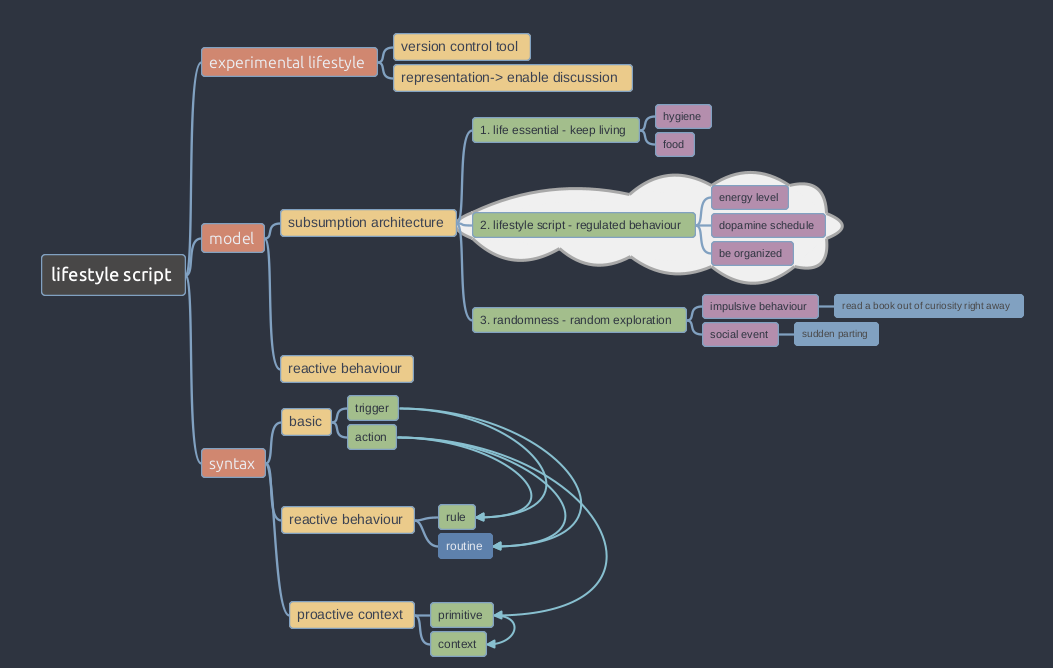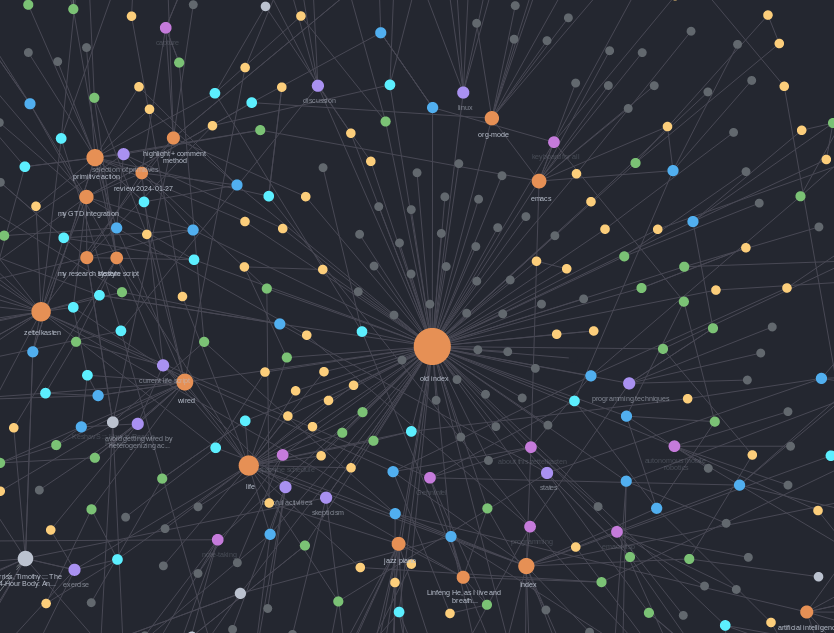atomic
Table of Contents
An entity is atomic when it cannot be split further; any further categorization would not make sense.
“Arithmetics” could be sensibly categorized into “plus, minus, devide, multiply”, but devide “multiply” futher into “term 1, multiply operator, term 2” won’t make much sense, as the relation of multiplication won’t hold when the 3 have seperated, and it is very unlikely that any of them would be mentioned without the other 2 at the same time.
- atomicity test: referred seperately?
- atomic notes make reference easy
- atomicity - flexibility
- atomicity make bad note better
Backlinks
zettelkasten and mindmap are interchangeble
zettelkasten and mindmap are structurally similar. Moreover, semantically, if a mindmap starts at a bulky concept
 the intermediate nodes would be interchangeable with navigation zettel, the leaf nodes interchangeable with atomic zettels.
the intermediate nodes would be interchangeable with navigation zettel, the leaf nodes interchangeable with atomic zettels.
zettel should be atomic
content of a zettel should only address atomic idea, because:
- atomic notes make reference easy, make discussion with zettel easy, as referring to one propositions is then intuitive
- atomicity - flexibility, making it convenient for rearranging organization and compilation, to reuse notes with zero effort
- atomicity make bad note better and hence ensure works would not be wasted
In practice, when made atomic, a zettel often falls in one of 3 common zettel categories
- use reference only if necessary
use only the plainest, most literal terms
“I couldn’t reduce it to the freshman level. That means we really don’t understand it.” - Richard Feynman
zettel name length is not important
some times zettel’s title/name could be quite long when concepts involved have long names, like “general purpose actuator” or “developmental robotics” or “constructivisit epistemology”. (or when those 3 used in the same sentence).
It could be concerning as it may imply voilation of atomicity, if the long name is due to appearance of many concepts, and perhaps multiple relationship. But as long as atomicity is not broken, the character length should not be a problem. Example be most of Luhmann’s zettels do not even have title(so the content is title; super long for title), and they worked superbly.
zettel name length is not important
some times zettel’s title/name could be quite long when concepts involved have long names, like “general purpose actuator” or “developmental robotics” or “constructivisit epistemology”. (or when those 3 used in the same sentence).
It could be concerning as it may imply voilation of atomicity, if the long name is due to appearance of many concepts, and perhaps multiple relationship. But as long as atomicity is not broken, the character length should not be a problem. Example be most of Luhmann’s zettels do not even have title(so the content is title; super long for title), and they worked superbly.
use project zettelkasten to program
The general workflow is this:
you write down the zettel for the program, this will be the top-level index for the project
title: portrait-gallary this program will create a gallary of portraits in HTML.
you write down feature stub zettels of the program in zettels and link them to the index.
title: infinite scrolling GUI tweak that when scrolling over the head of the GUI array, the tail of the GUI array would appear
implement the feature in zettels as snippets. if further decomposition of task or helper function is noticed, make zettels about them and link to them. Note that it is better to keep arbitary names in the zettel that use the helper function, rather the name of helper function, so:
title: click and drag + getX() <- ~[[getting mouse position in html container in js]]~
- why and to what it is better:
- you need to read the title - it has to make sense very quickly to you, you search notes on it
- closer to permanent - they can be put into main right away
- atomic - hides arbitary detail of “click and drag”. A coupling would be made if the name of the zettel with the mouse position snippet is called “getX” because “getX” is used in “click and drag”.
- why and to what it is better:
- research when further information is needed for the implementation, such as syntax, framework’s functions/objects, common practice, algorithms, etc.
code zettel as component
As zettelkasten operates on atomic notes, notes on patterns and snippets are likely capable of being described as worry-free black-box or component, therefore forms a solid ground for or component-based software engineering.
atomicity - flexibility
It is very common that one idea originally only appeared as a branch from what once seemed to be more important, turns out to be a lot more significant later.
For example, [insert an example here when I have one]
In that case, write all notes atomically from start make such rebase of focus very easy.
zettelkasten

zettelkasten is note-taking and note management system with the following 4 properties: